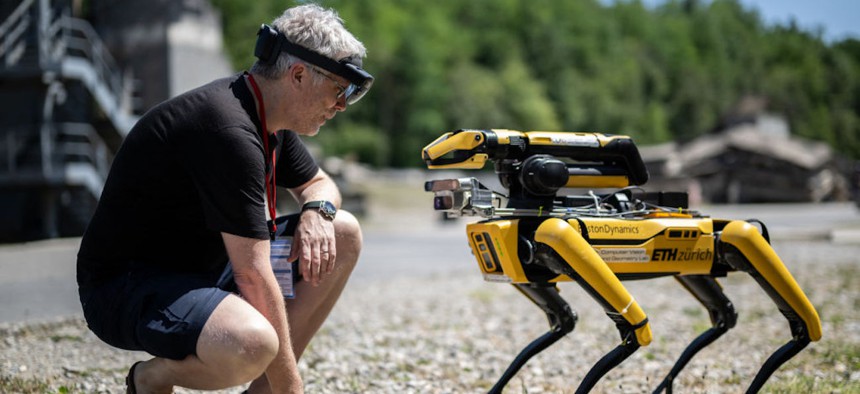PATRICK TUCKER

You’ve likely heard of Nvidia, which just beat out Aramco to become the world’s third-largest company by market capitalization. But that high stock valuation bespeaks a big problem: the demand for chips that can run energy-intensive AI applications far exceeds supply. That’s an especially big problem for the military, which is looking to run complex AI programs in environments where calling back to large enterprise cloud clusters won’t be possible due to electromagnetic interference, remoteness, etc.
DARPA is funding research into new chips to do the job. On Wednesday, the defense-research agency announced an $18.6 million grant to EnCharge AI, a California company founded in 2022 by Princeton computer science professor Naveen Verma.
The grant is part of DARPA’s $78 million Optimum Processing Technology Inside Memory Arrays, or OPTIMA, a program that aims to develop new types of chips that can run AI applications using fewer computing resources, which also saves on energy and size.
Verma and his team have created a new type of chip for the the type of AI called large-scale convoluted neural networks. Today’s chips generally shuttle data back and forth between external memory and the embedded memory located in the chip’s processor, so data is effectively stored in one place but processed in another place. That results in wasted energy and delays, just as if you had to constantly check a reference book for answers you couldn’t memorize.
Instead, Verma’s chip does in-memory computing. Their processor uses “metal–oxide–metal (MOM) finger capacitors rather than current-domain computation, relying on bitcell transistor transfer functions,” he wrote in a 2019 paper. This has increased energy efficiency by a factor of 16 and throughput by a factor of 5. That could enable much smaller devices like phones and laptops to run much more complex AI programs without need to call back to large server clusters. “The future is about decentralizing AI inference, unleashing it from the data center, and bringing it to phones, laptops, vehicles, and factories,” Verma said in a press release.
No comments:
Post a Comment